Plant Profile: A Glimpse of the Distant Past
After a hiatus of several years I have again be collecting seeds for the Chicago Botanical Gardens SOS Millennium Seed Bank Partnership. They issued a priority list but were looking for other species as well. Apparently, there have been few collectors for the Southern Illinois Tillplain Region.
Not all species are easy to collect, for all sorts of reasons. One requirement is a desired minimum of 3,000 seeds per species. That can be a challenge even when that particular plant is not all that uncommon. I had found powerline corridors through woodlands or their edges quite productive in the past. Recently there had been extensive brush removal and tree trimming in the Litchfield area. Left behind were often dense layers of chips; not much has yet grown in such spots, except for 8’ tall Marestail and even more rank Fireweed. The surface had been slightly scoured elsewhere by equipment. With the rain rich growing season this year, species recruitment in such opened-up sites has at places been remarkable. Some were nasty invasives, but the majority species of great interest. Among the target species were numerous annuals and short-lived perennials, often in amazing numbers. That allowed for the collection of a good bit of seed of such species as Purple and Whorled Milkwort, Scribner’s Panic Grass. Another species was Grooved Yellow Flax. In spite of considerable deer predation, I came up with a good bit of seed for the latter, though probably not quite the desired amount. It is a dainty plant and likely overlooked, therefore no doubt much more common than botany texts for our state indicate.

Pencil fower, here at its northern range limit 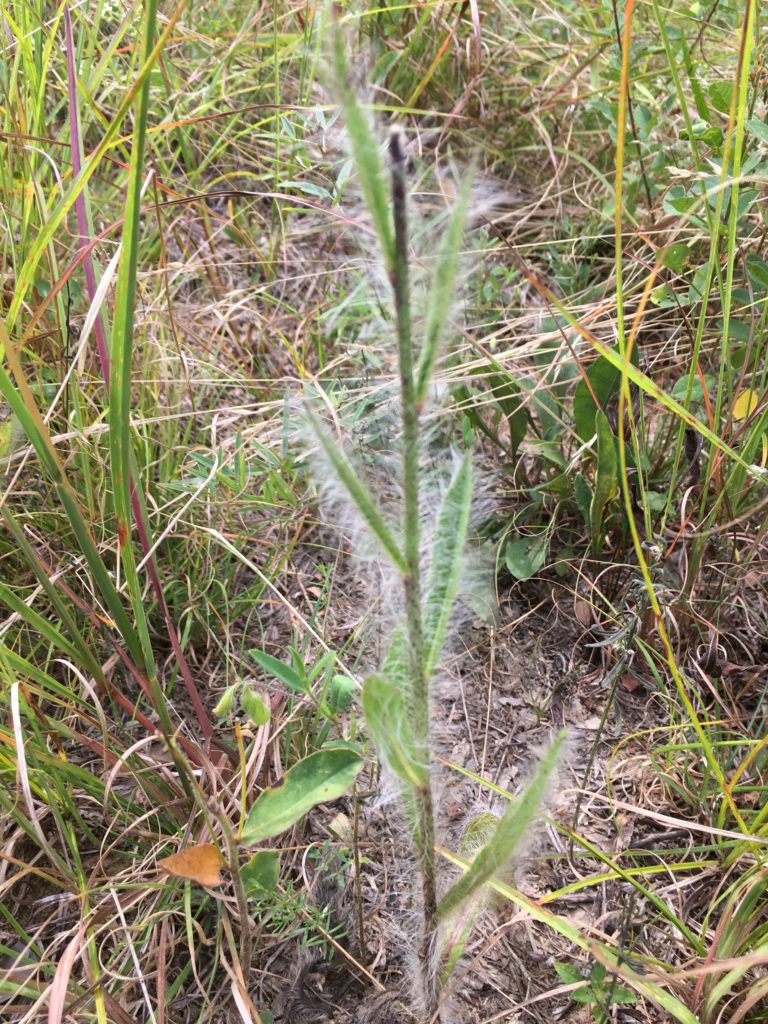
Long-hair Hawkweed, clipped by deer 
Little Bluestem in late light 
Hypericum mutilum and Lobelia inflata rosettes 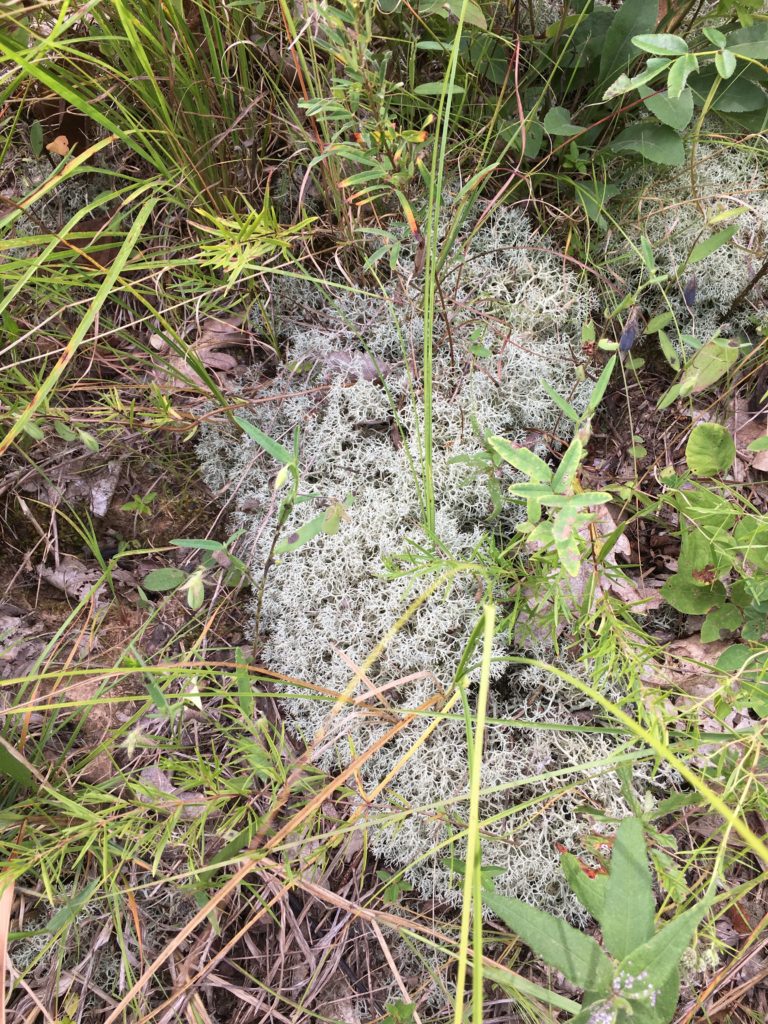
Cushions of Cladonia or Reindeer Lichens. Note also the many other species in this image, as is the case in other photos as well 
Purple Milkwort, one of many small annuals here often referred to as ‘belly-plants’ 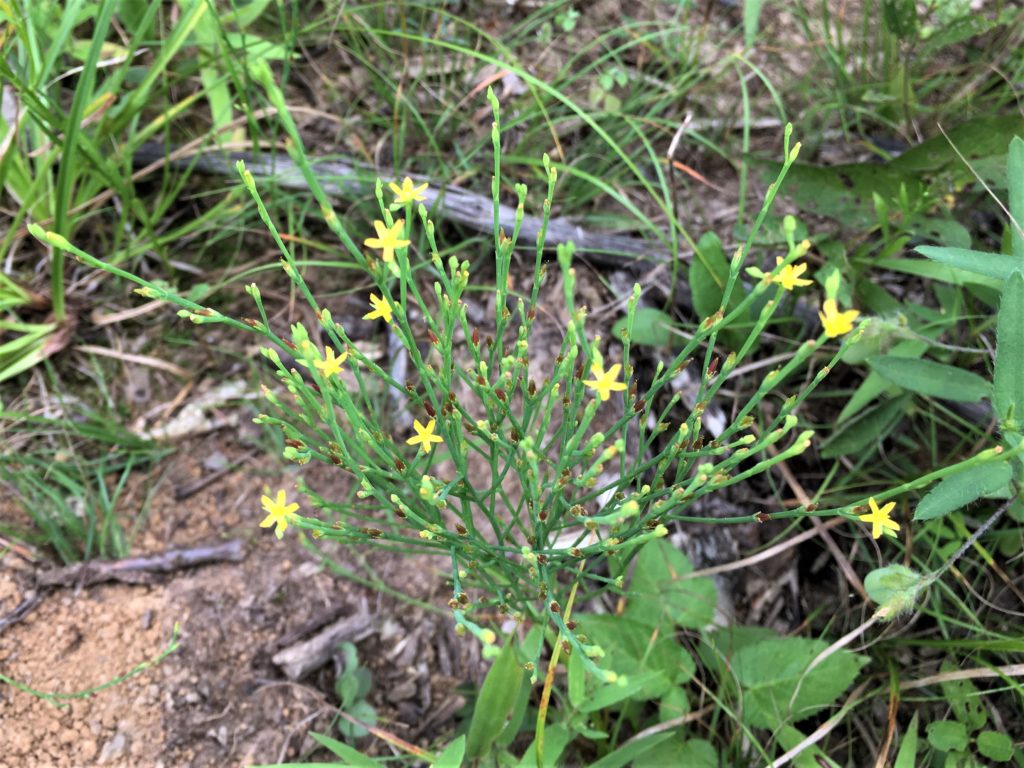
Pine or Orange-weed, a Hypericum 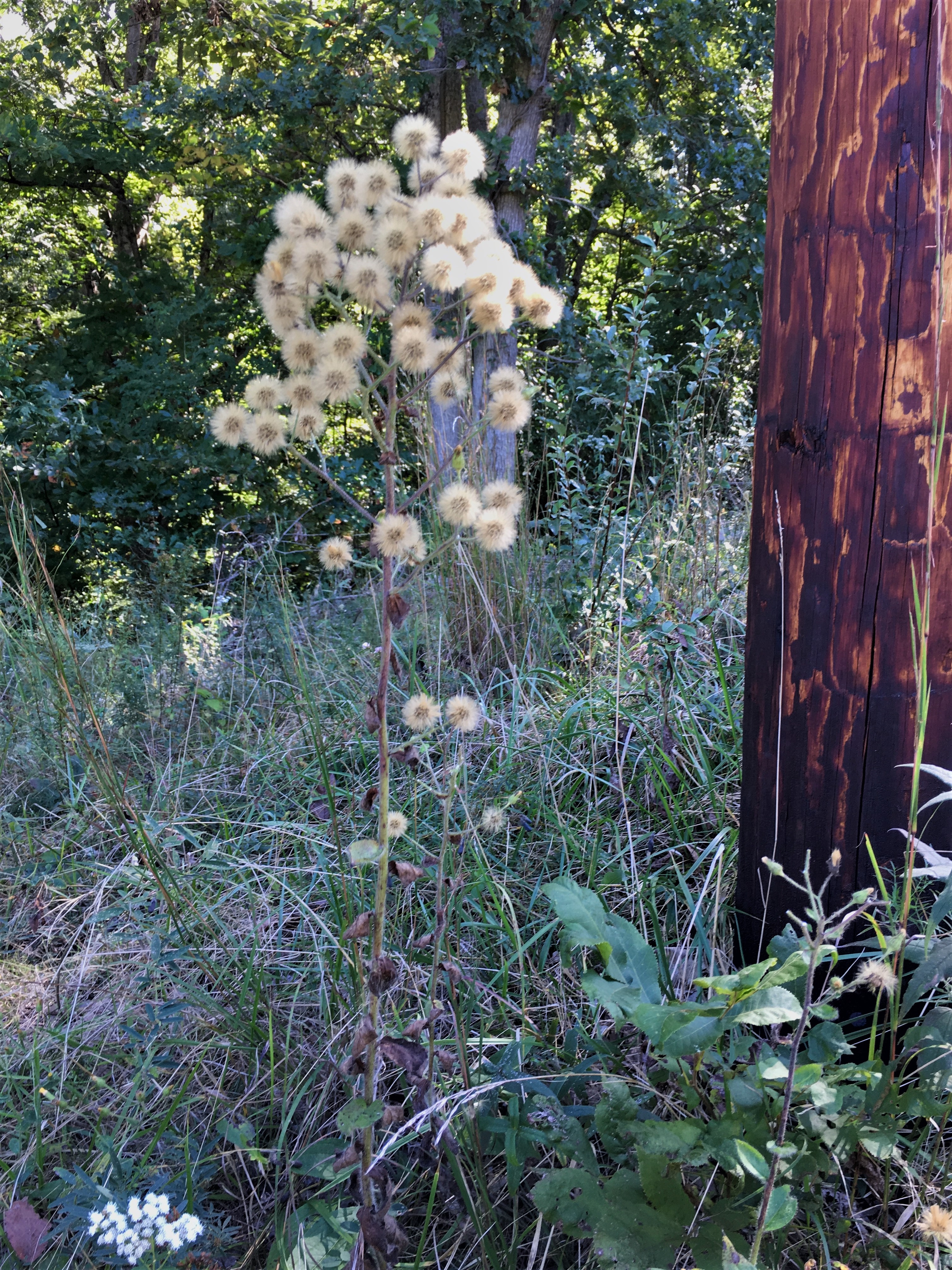
Rough Hawkweed in late light 
Rattlesnake Fern 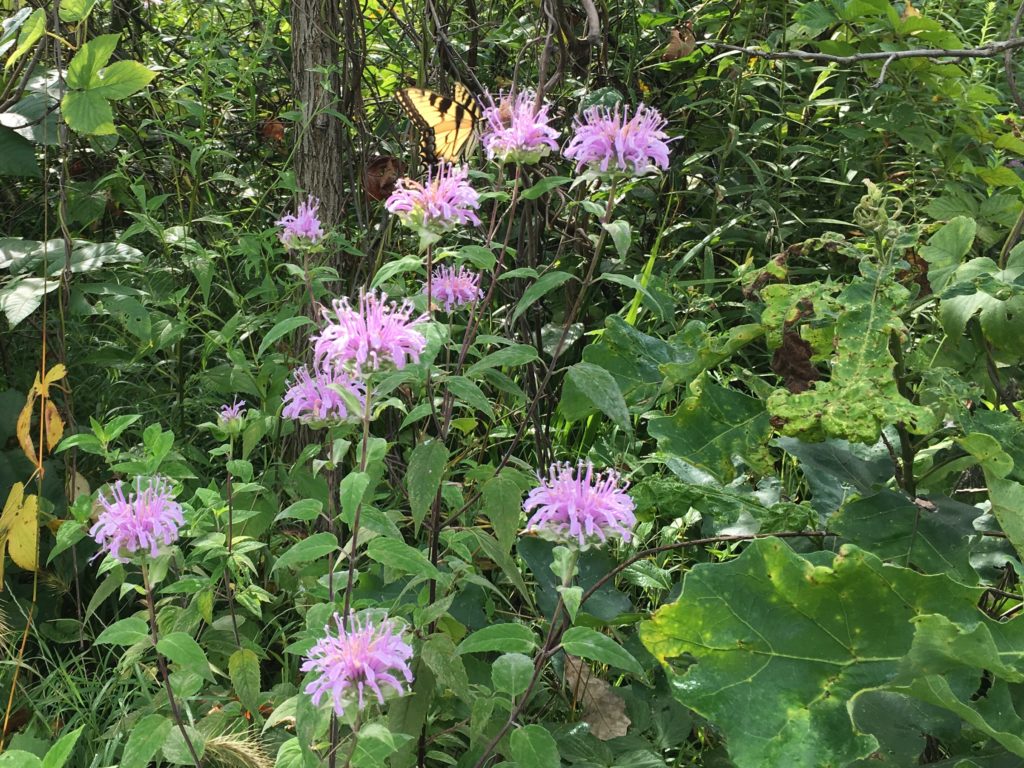
Common Beebalm with Tiger Swallowtail
The best site I found was along a roadside and across a small ridge, more or less flat, then sloping to the west and more steeply to the east. There were many other species in this suite of plants. Most are probably species that thrive only under very specific successional regimes or those that require nearly full sun exposure [or both – it’s complicated]: Narrow-leaf Pinweed, Arrow-head Rattlebox, Venus Looking-glass, Virginia Plantain, Common Rose-gentian, Slender False Foxglove. One could add several other species, such as the Long-haired and Rough Hawkweeds, maybe a bit longer lived. I don’t know. Deer had completely browsed down the former, so no seed to collect. I was fortunate to find enough of the latter elsewhere. The former is becoming downright uncommon, due to predation and above all habitat loss. I always think of an English sheep dog when I encounter it with its copious long shaggy white hairs. Yet another suite of plants looked like they came right off a prairie; Rough and Prairie Blazing-star, dense stands of Little Bluestem, Prairie Beebalm, Tall Tick flower Coreopsis, Butterfly Weed, several Tickseed Trefoil and Bush clover, just to name a few. I mentioned the Flax above. Did I mention that it is easily overlooked? While taking required photos of it and its habitat I noticed some small plants also with tiny yellow flowers. On closer examination they turned out something else; actually 2 different species, one Orange or Pine Weed, the other Nits and Lice [what a name!]. Both are annual species of St. John’s Wort. Not only was this quite a surprise, they are probably new records for our Montgomery Co. More surprises abounded. There were dense carpets of Poverty Grass, Pathway Rush and Interior Rush. Another rush caught my eye with its chestnut colored inflorescence. It was Grass-leaved Rush, occasional in wet prairie remnants. It is one of my favorites as the seed heads look great in dried flower bouquets. And then among the many sedges, which I did not catalogue earlier was one still in fruit: Squarrose Sedge, also of wet habitats. What a surprise to find all of that on these well drained hilltops and slopes. Across the road in a powerline side corridor is one of the best stands locally of the Beaked Switch Grass, a component of southern moist prairies.
Woody species were not lacking. Being a former woodland, one would not be surprised to find hickory grubs and especially those of oaks: white, black, shingle, pin, chinquapin and post. In the shrub layer were many nasty invasive species – the adjacent woods are full of them. But here another surprise, with sizable stands of Prairie Willow, New Jersey Tea, Dewberry, Rough Dogwood, Shrubby St. John’s Wort and especially abundant American Hazel. Common elsewhere, Sassafras, Sumac and Blackberry were largely lacking. Some elements surprise by their presence, others by their absence. The natural world is infinitely varied.
None of this is found in the adjacent woods today, best I can tell. What happened? The road to Lake Yaeger and the powerline were constructed in the early 1960’s. The woods were then still heavily pastured and hogs were raised on the steep slopes. It must have been like throwing a monkey wrench in a jet engine! Few cared then. Do we now? While seriously damaged with nearly 150 years of farming much native flora had survived either as suppressed plants or in the seed bank. How many conservative species bit the dust, all the species with recalcitrant seeds? Will we ever know? Maybe better that we don’t. It is disheartening. That so much survived here is still quite remarkable. I have touched on only a few.
The native landscape would have looked very different 200 years ago; widely spaced massive oaks and hickories would have dominated. The ground layer was likely a mosaic of shrubs, prairie and woodland forbs and grasses of great variety.
Yes, here in such utility corridors is a dim view of what this park-like landscape once may have looked like. Few such places are quite this species rich, also perhaps inadequately explored. But many have slightly different assemblages, unique in their own ways. Clearly, even at the local level our woodlands were not all the same. It has been my privilege to explore such diverse and lovely places.
Such tiny patches are largely all we have left. Should we preserve them? How do we go about this? Who will step up to the plate? They could be nuclei for restoring adjacent woodlands. It is good to be concerned about climate change and such things. Vibrant natural systems once were terrific carbon sinks. Can they be again or are we to seek grandiose solutions only in technology? What do you think?

